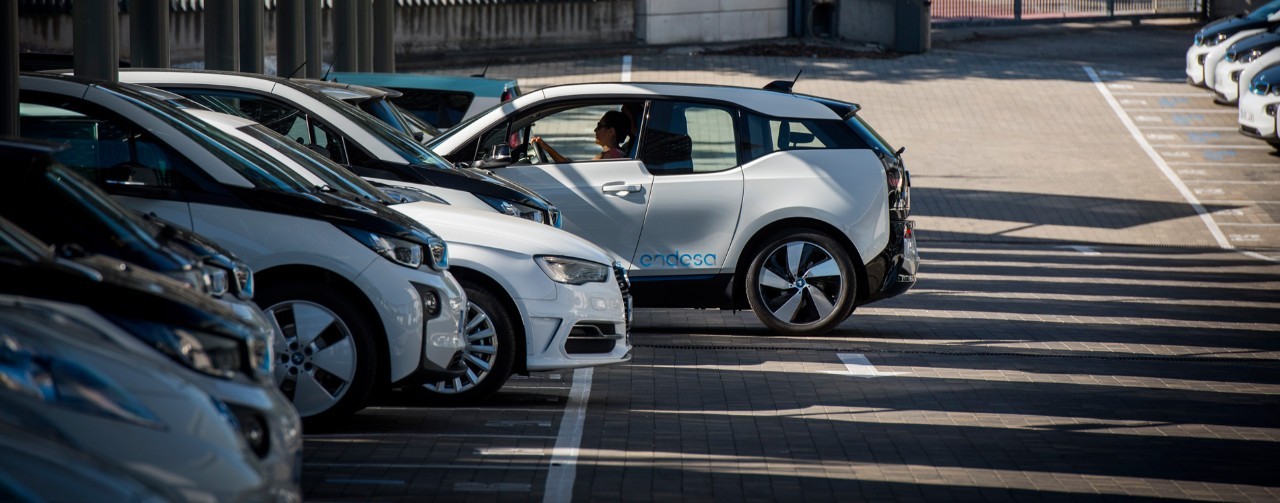
If you prefer to always view the website in English, please click here.
If you prefer to always view the website in English, please click here.
Digital technologies are part of our everyday lives, and, at Endesa, we view them as one of the strategic pillars in our developing activity. We work to incorporate new technologies in order to improve our digital capabilities, improve our customer relations and optimise processes which would otherwise be slower and less efficient.
The turbine maintenance process we use for our wind farms is a good example of an innovative system based on digitisation. It is a predictive analysis system based on studying the vibrations of the turbines to detect likely failures even months before they happen. With this model, it is possible to plan for repairs and prevent the turbines from breaking down, improving efficiency and reducing costs.
How does this fault-detection system work? Only a few years ago, the oversight of wind turbines depended on endoscopy campaigns and visual inspections, which were extremely costly. The new system, which has already been rolled out to 1400 turbines, is based on machine learning: that is, the systems learn about how the turbines behave, which helps to detect where their behaviour deviates from the norm, and activate an alarm.
In addition, thanks to the Internet of Things (IoT), it is possible to send information from data devices on the turbines themselves to cloud servers. The final element in the system is the systematic generation of knowledge from the analysts’ experience.
One of the people spearheading this project, Miguel Colomo, of Predictive Maintenance and Technical Support at Enel Green Power, points out that the main benefit of this model is continuous knowledge of the condition of the machines, so we are able to determine the optimal time to carry out repairs, and conduct the work during periods when there is not much wind. “In the best-case scenario, we would detect a symptom that typically causes damage to the machine, and take action even before it becomes necessary to carry out a repair. Sometimes, the particular type of fault can only be detected when damage has already been done, but if it has not progressed very far, it is possible to carry out a minor repair to prevent the problem from worsening, which greatly reduces the cost of the repair. Finally, even when dealing with faults which can only be detected when they are already relatively advanced, we can track their evolution and extend the life of the machine as far as possible without the need for a forced stop”, explains Colomo.
“Sometimes, the particular type of fault can only be detected when damage has already been done, but if it has not progressed very far, it is possible to carry out a minor repair to prevent further damage, which greatly reduces the cost of the repair.”
Miguel Colomo, Predictive Maintenance and Technical Support at Enel Green Power
This model, which we at Endesa developed, now holds information from 1400 turbines; 600 are in Endesa’s renewable energy generation fleet in Spain; the rest are in Enel Green Power’s installations in Mexico, Chile, Italy, Greece and Romania, amongst other countries. The project began in 2014, when the experts began studying the potential of such systems, but it was not until 2016 that predictive analysis of wind turbines began being applied effectively.
This analysis system, which can be extrapolated to any model of turbine, is capable of delivering savings ranging between 15% and 95% on the cost of repairs of the main components throughout the turbine’s lifetime. The saving that can be made by detecting just one fault may be over €100,000 per turbine.
“Before predictive vibration analysis and maintenance came into use, the repairs required were of greater consequence, and the turbines had to be put out of service for longer periods. Oversight of similar quality to that which is possible with the vibration analysis system would have cost eight times as much with the previous system.”
Miguel Colomo, Predictive Maintenance and Technical Support at Enel Green Power
The experts managing this system monitor the status of the machines and carry out expert diagnostics by analysing the vibration data. What is more, they are continuously seeking out new opportunities to improve the system’s detection capabilities and find new solutions that can be applied, in the wind power industry or indeed in other settings.
The new technologies we are discovering and incorporating represent an opportunity for growth in our digitisation process. Knowledge and innovation must go hand in hand so that the techniques related to machine learning and automation can also be useful in other areas. It is key to study these techniques for future applications to continue improving our services.





.jpeg)